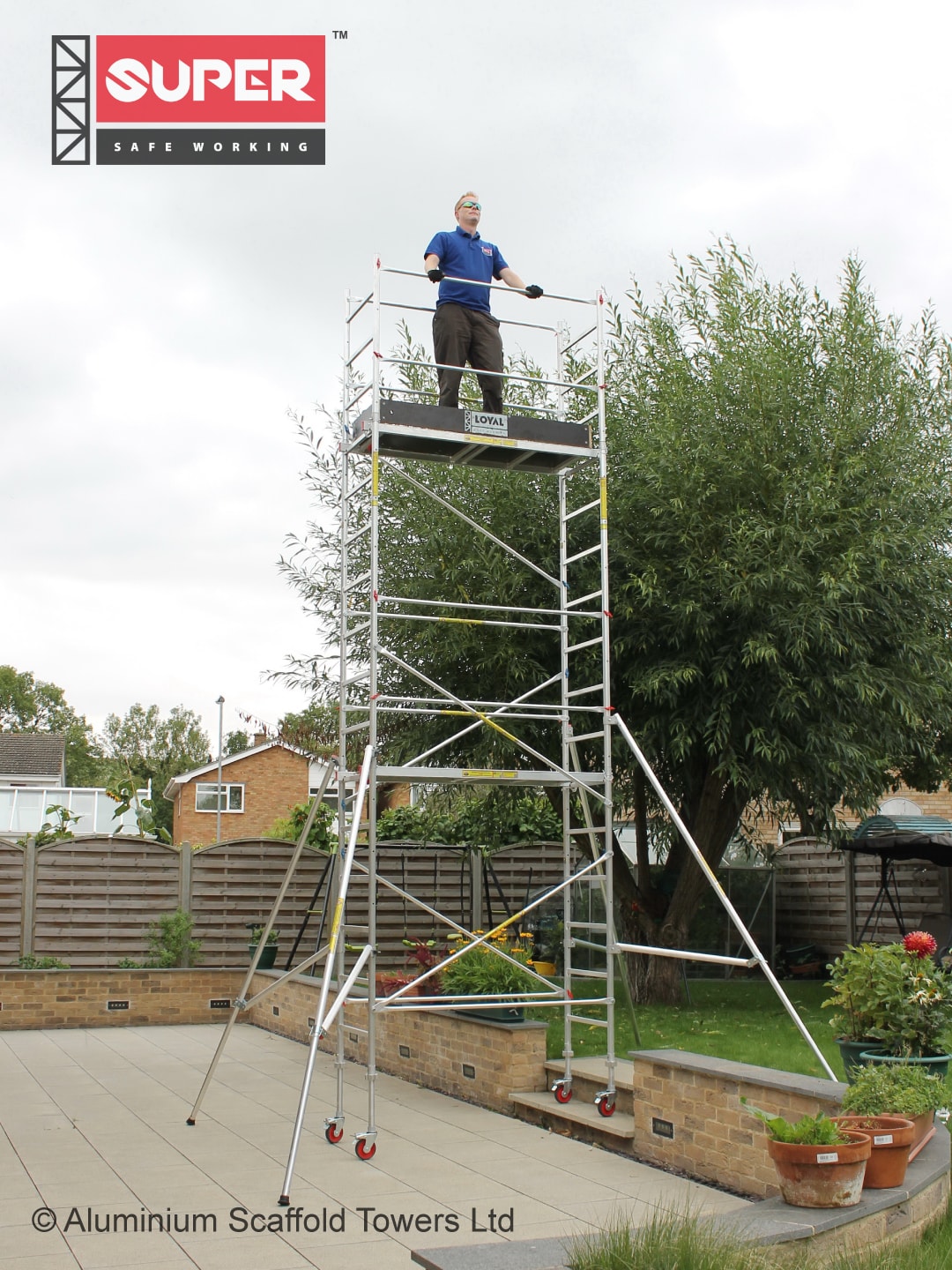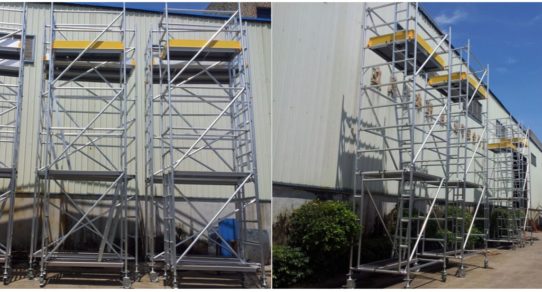Cutting-edge Scaffold Design: Tailored Solutions for Complex Tasks
Eco-Friendly Scaffolding Solutions: Building Sustainably ========================================================
Environment-friendly scaffolding remedies are crucial for sustainable building, minimizing environmental effect. By accepting eco-friendly technology and cutting-edge materials, these choices drive eco-conscious methods onward. The advantages include cost financial savings, lower carbon footprints, and lining up with worldwide sustainability goals. With developments like bamboo and recycled steel, the construction market develops in the direction of a greener future. Carrying out energy-efficient designs and renewable resources even more enhance sustainability. Discover just how eco scaffolding not only benefits the environment yet additionally enhances long-term expense effectiveness and market practices.
Importance of Eco-Friendly Scaffolding

The value of green scaffolding in building tasks can not be overemphasized. Sustainable scaffolding techniques play a crucial role in reducing waste and lessening the carbon impact associated with building tasks. By opting for environment-friendly scaffolding services, building business can actively add to environmental conservation and sustainability efforts.
Standard scaffolding techniques often result in considerable material waste, causing ecological damage. Eco-friendly scaffolding, on the other hand, concentrates on decreasing waste via efficient planning, material option, and application. This method not just reduces the negative impact on the setting but likewise advertises a much more cost-effective and sustainable building procedure.
Furthermore, environment-friendly scaffolding helps in reducing the carbon impact of building tasks. By utilizing renewable materials, executing energy-efficient techniques, and lowering general waste generation, construction sites can substantially decrease their ecological effect. Welcoming lasting scaffolding services is not just an accountable choice yet additionally a strategic one for companies aiming to straighten with international sustainability goals.
Benefits of Sustainable Scaffolding
Choosing sustainable scaffolding techniques not only alleviates environmental damage however additionally produces a host of benefits for building tasks. https://hillingdonscaffolding.co.uk/index.html One significant benefit is price savings. By utilizing lasting scaffolding products and methods, building firms can decrease costs related to conventional scaffolding systems. For instance, materials like bamboo and recycled steel are not just environmentally friendly however likewise cost-effective alternatives to traditional scaffolding products.
Additionally, lasting scaffolding adds to lessening the ecological effect of building and construction tasks. Standard scaffolding typically entails the use of non-biodegradable products and high power consumption throughout producing processes. In contrast, lasting scaffolding options focus on green materials and energy-efficient production techniques, minimizing the overall carbon footprint of construction tasks.
Product Developments in Scaffolding
Exploring lasting scaffold products and environmentally friendly building and construction options can bring about considerable improvements in the scaffolding market.
Innovative products use the possible to minimize ecological influence while maintaining structural stability and safety and security requirements.
Accepting these material developments is vital for promoting sustainability in construction practices.
Sustainable Scaffold Products
Ingenious innovations in scaffold products have changed the building market's approach to sustainability. Bamboo scaffolding, known for its stamina and green residential or commercial properties, has actually gained popularity as a lasting option to standard products. Bamboo is a fast-growing plant that is easily available and eco-friendly, making it an eco mindful selection for scaffolding needs.
In addition, using recycled steel frameworks in scaffolding provides a service that lessens the ecological influence of building projects. By repurposing steel right into scaffolding components, the building industry can reduce its carbon impact and contribute to a more lasting future.
These sustainable scaffold products not only supply structural integrity yet also straighten with the growing demand for green building and construction practices.

Eco-Friendly Building And Construction Options
Structure upon the foundation of lasting scaffold materials, the expedition of environment-friendly building alternatives in scaffolding remains to drive advancement towards eco aware building methods. Green structure initiatives are significantly forming the building industry, bring about the development of scaffolding materials that align with eco-friendly strategies.
Producers are currently focusing on producing scaffolding solutions that are not only strong and sturdy but additionally lasting and green. Bamboo, recycled steel, and aluminum are becoming prominent options in environmentally friendly scaffolding building and construction, providing toughness and stability while decreasing the ecological impact.
Energy-Efficient Scaffold Layouts
Energy-efficient scaffold styles intend to minimize energy consumption and lessen ecological influence during construction tasks. By including renewable power sources and eco-friendly technology, these layouts add to lasting structure methods.
One instance of energy-efficient scaffold layout is the combination of photovoltaic panels right into the scaffold structure. These panels harness sunlight to generate electricity, reducing the reliance on standard power sources. Additionally, energy-efficient LED illumination systems can be set up on scaffolds to decrease power consumption during evening job, boosting both safety and security and sustainability.
Furthermore, using lightweight and resilient materials in scaffold construction not just decreases energy requirements for transportation and assembly but additionally reduces environmental waste. Creating scaffolds with flexible parts that can be easily disassembled and recycled on numerous tasks promotes a round economic climate technique, reducing the general carbon impact of construction activities.
Lasting Practices in Scaffolding
Sustainable practices in scaffolding include vital elements such as product recycling and energy-efficient layouts.
By prioritizing the recycling of products and opting for energy-efficient layouts, scaffolding firms can significantly minimize their ecological influence.
These techniques not just benefit the environment yet likewise contribute to the total sustainability of building and construction projects.
Material Recycling
In the construction market, the technique of product recycling plays an essential duty in promoting sustainability within scaffolding tasks. Recycling advantages both the setting and the economic situation by minimizing waste sent out to landfills, preserving natural resources, and lowering greenhouse gas exhausts related to the production of brand-new products.
Circular economic climate techniques are progressively being carried out, stressing the significance of keeping products being used for as lengthy as feasible through recycling and reusing procedures. Scaffolding companies are embracing these strategies by collecting and arranging materials post-project, making certain that those products are either recycled or repurposed for future projects.
Energy-Efficient Designs
Implementing innovative design techniques in scaffolding construction can result in considerable reductions in energy consumption and environmental impact. By including energy-efficient styles right into scaffolding frameworks, the building sector can add to green building practices and lasting growth.
Utilizing renewable resource sources such as solar panels and wind turbines can help power lights systems and devices on scaffolds, decreasing reliance on nonrenewable resources. Furthermore, executing easy style strategies like all-natural ventilation and daylighting can reduce the requirement for man-made home heating, cooling, and lighting, even more enhancing power performance.
These energy-efficient remedies not just reduced functional prices yet additionally decrease the carbon footprint of construction tasks, aligning with the market's shift in the direction of more lasting methods.
Future Fads in Eco Scaffolding
With a growing focus on environmental duty in building and construction practices, the development of eco scaffolding is shaping the future of the industry. Future trends in eco scaffolding are progressively concentrating on integrating environment-friendly modern technology and making use of renewable resources to decrease the environmental effect of building projects.
Environment-friendly innovation plays a pivotal duty in the growth of eco scaffolding, with developments such as solar-powered scaffolding lights, energy-efficient scaffold heating systems, and green scaffold products becoming much more widespread. These innovations not just reduce the carbon impact of building sites but likewise add to cost savings in the long run.
In addition, making use of renewable resources in eco scaffolding is obtaining traction. Bamboo scaffolding, as an example, is a sustainable alternative to typical steel scaffolding, offering stamina and sturdiness while being environmentally friendly. Furthermore, recycled materials like recovered wood and steel are being repurposed for scaffolding building, promoting a circular economic climate within the sector.
As environmental awareness remains to grow, the assimilation of green technology and renewable resources in eco scaffolding will be crucial chauffeurs of sustainable building practices in the future.
Regularly Asked Inquiries
Exist Any Kind Of Certain Certifications or Specifications That Eco-Friendly Scaffolding Solutions Must Satisfy?
Certification demands and environmental standards play a vital function in ensuring that environmentally friendly scaffolding services satisfy defined requirements for sustainability and environmental influence. Conformity with recognized certifications and standards is vital for advertising green methods in building.
How Does the Cost of Eco-Friendly Scaffolding Contrast to Conventional Scaffolding Options?
When contrasting the price of eco-friendly scaffolding to conventional alternatives, elements such as worldly high quality, longevity, and installment expenses need consideration. While first prices could vary, the lasting benefits in ecological influence and sustainability can outweigh in advance costs. stair access scaffolding
Can Eco-Friendly Scaffolding Solutions Be Custom-made to Fit Various Building Jobs and Demands?
Custom-made applications for green scaffolding deal with diverse building tasks and market requirements. Flexible options can be tailored to details demands, making certain compatibility with numerous frameworks and improving sustainability techniques in the building industry.
What Are Some Potential Difficulties or Limitations Related To Applying Lasting Scaffolding Practices?
Applying lasting scaffolding practices can encounter challenges as a result of strict governing compliance, limited material resilience, and higher prices. Stabilizing environmental effect with safety and security requirements continues to be crucial. Advancement is important to get rid of these obstacles.
Exactly How Can Companies and Building Companies Advertise and Educate Their Labor Force on the Benefits of Eco-Friendly Scaffolding Solutions?
To promote environmentally friendly scaffolding solutions, companies can involve their workforce with sustainability training programs. By highlighting the advantages of these practices, firms can educate workers on the relevance of integrating sustainable solutions in building and construction jobs for a greener future.
Verdict
In recap, green scaffolding remedies are crucial for lasting building techniques. The benefits of utilizing sustainable materials and energy-efficient designs in scaffolding appear in lowering environmental influence and advertising environment-friendly structure campaigns.
By adopting lasting methods in scaffolding, the construction sector can add to a much more environmentally friendly future. As product advancements remain to develop and future trends in eco scaffolding arise, the significance of structure sustainably will just expand.
